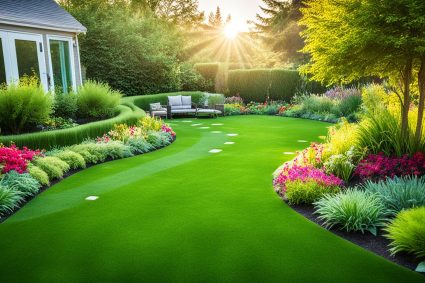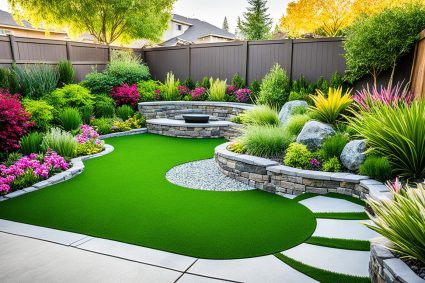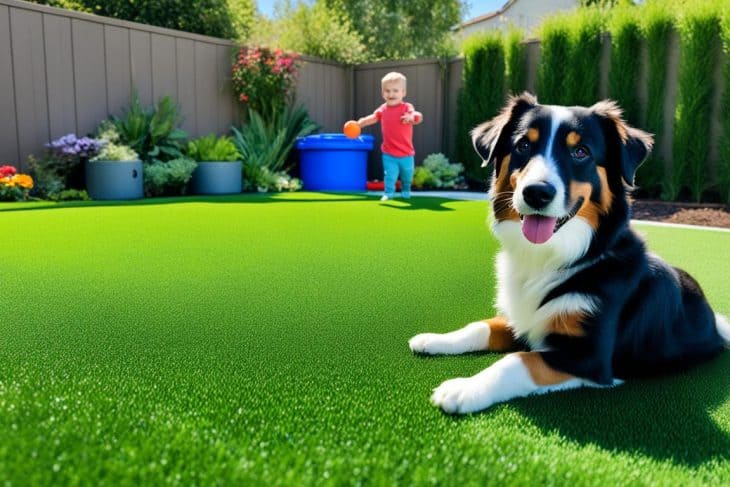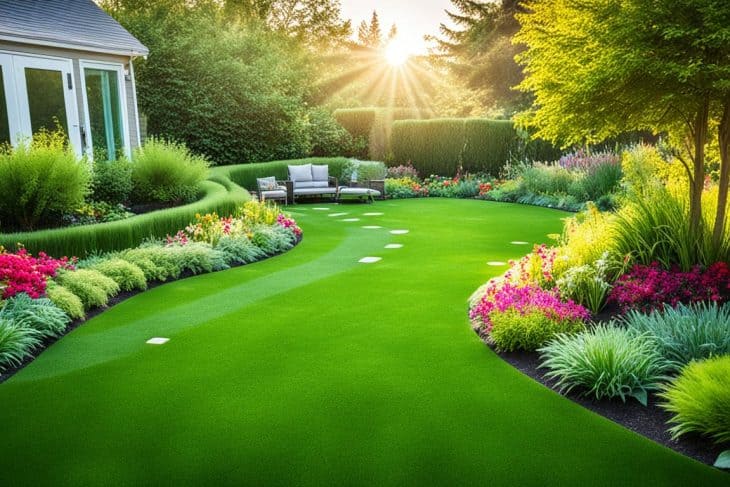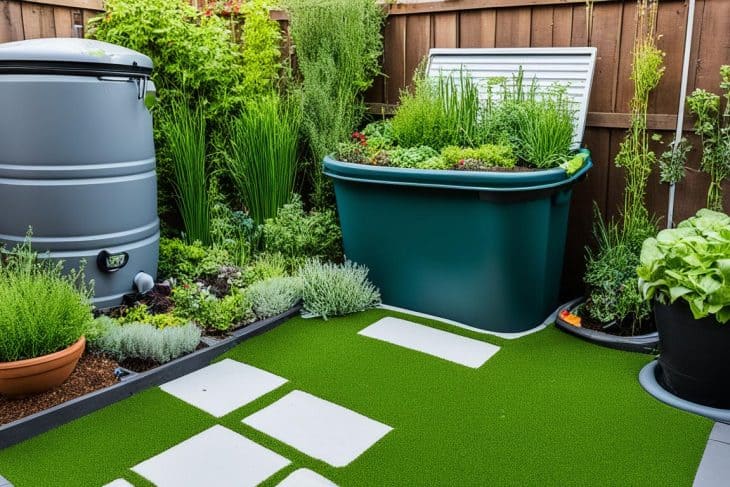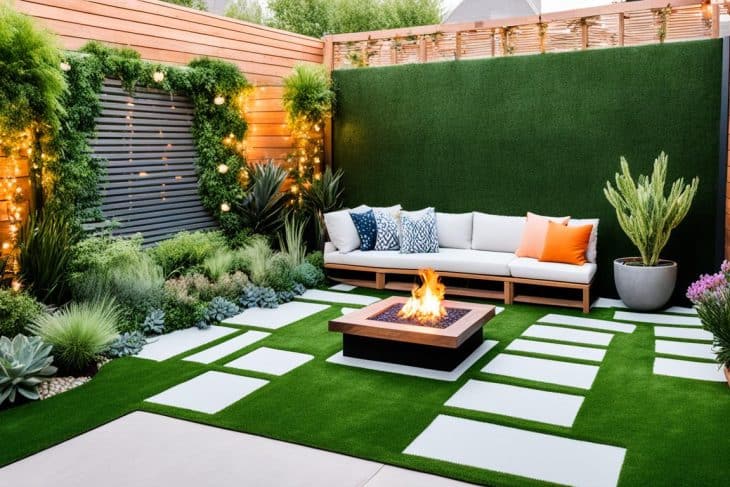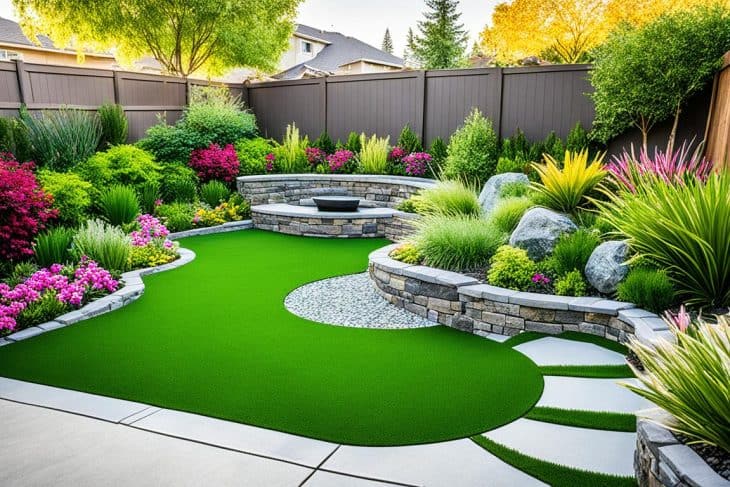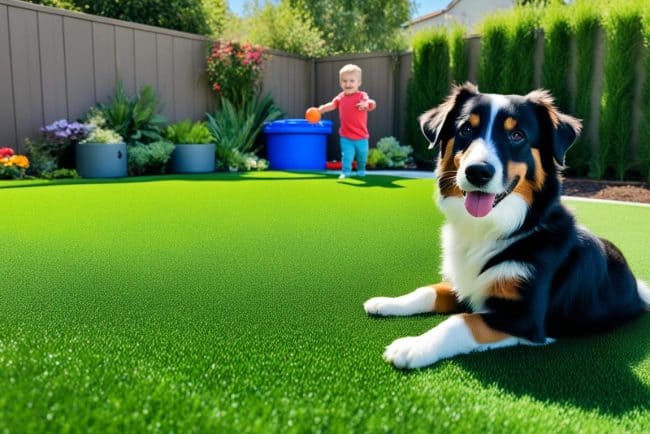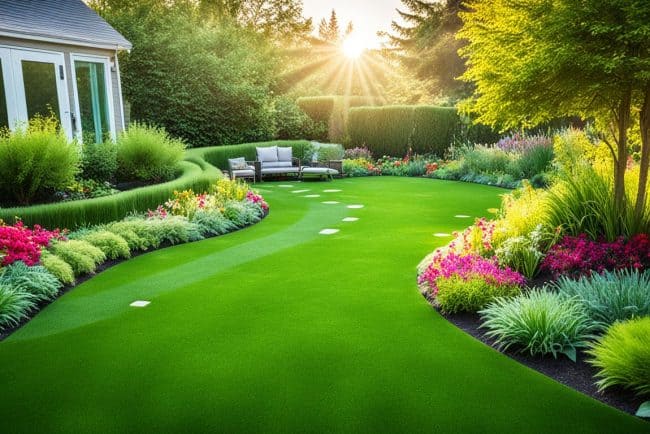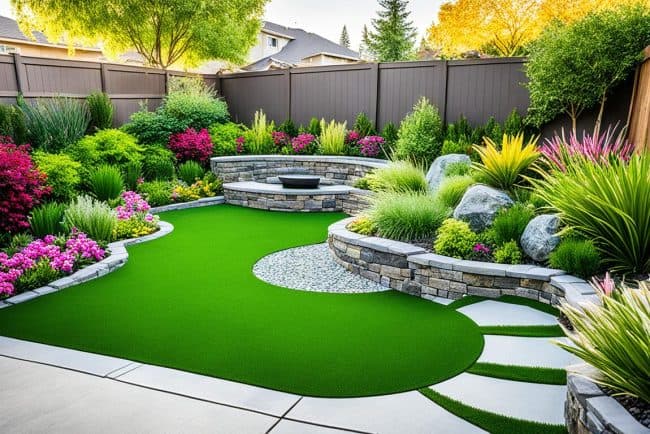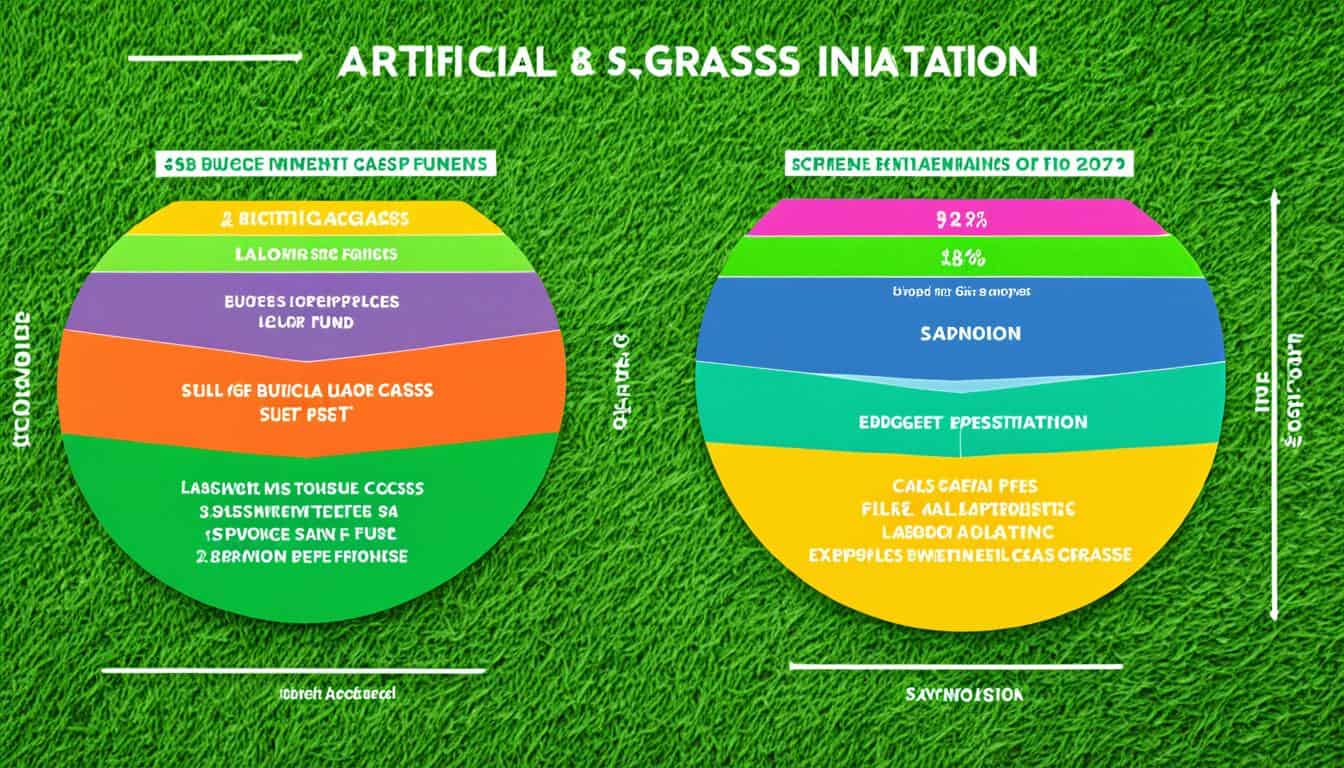
I wanted to make my backyard easy to care for. Installing artificial grass seemed like the best choice. But, I was on a tight budget. I had to plan my costs very carefully to make it work. I found many budget strategies to keep my project affordable without losing quality.
Measuring correctly was key to avoid buying too much material. This saved money. I also learned using hand tools instead of costly rental equipment helped. Choosing cheaper sub-base materials like decomposed granite cut costs too. I found using landscaping anchor pins for the turf edges was cheaper than seaming tape. These steps not only made installation affordable, but also promised future savings. Artificial grass means no more spending on natural grass care.
Starting this project, I felt ready. With the budget strategies I discovered, I could make my dream yard come true. And I could stick to my budget too.
Understanding Synthetic Turf Pricing
Synthetic turf pricing can change a lot. It depends on things like quality, how it’s installed, and market demand. More and more people and places like homes, schools, and businesses are choosing artificial grass. They do this because it’s easy to take care of. They also worry less about using up water and how much real grass costs to maintain.
The Importance of Quality and Cost
Quality and cost matter a lot when it comes to synthetic turf. If you buy a better quality, it might cost more, but it looks nicer and lasts longer. Deciding between quality and cost is important. Thinking about how the better quality can save money over time helps. It’s because you won’t have to replace it as soon. Knowing about cheaper options that might not last as long is key for buyers.
Comparing Prices of Different Types of Turf
Different synthetic turfs have different prices. On average, putting in artificial grass could cost about $5,390. But the price can start as low as $1,926 or go up to $13,436 for top-end setups. Installation usually costs between $3,015 and $7,698. Prices per square foot range from $6 to $18. It’s important to think about both material and labor costs. These costs can be from $3 to $10 and from $3 to $8 per square foot, respectively.
Market Trends in Artificial Grass Costs
Knowing the trends in artificial grass costs is useful. As more people want synthetic grass, competition grows, especially for important projects. New companies are trying to find the right balance between being affordable and offering quality. This helps them stay competitive while keeping profits reasonable. Understanding these market trends helps people involved make smart choices and plan their budgets well. This is important to make sure projects are successful.
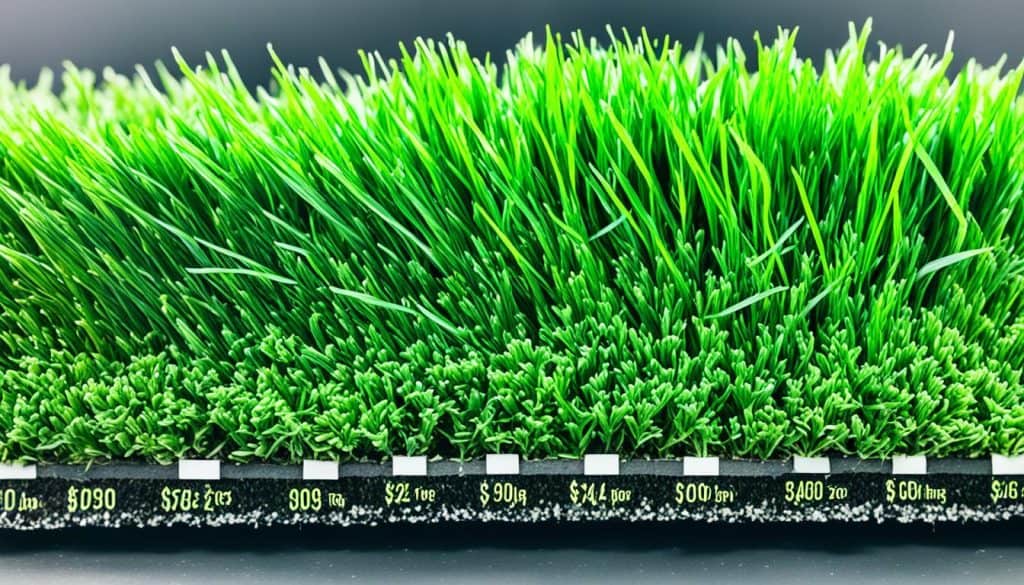
Budget Strategies for DIY Installation
Starting a DIY artificial grass project is both rewarding and budget-friendly. It’s important to prepare the space well and pick tools that are easy on the wallet. Doing this helps me spend less and still get great results. Planning ahead in the setup phase cuts costs without sacrificing the project’s success.
Preparing Your Space to Minimize Expenses
Good preparation is key for a top-notch DIY artificial grass project. Here’s how to keep costs low:
- Clear the area: Make sure to remove any plants, stones, or trash to get the area ready.
- Level the ground: A flat base prevents spending more on fixing drainage or evening out the area later.
- Measure accurately: Knowing the exact space needed for the grass stops you from buying too much and wasting it.
Choosing Inexpensive but Effective Tools
Choosing the right tools is a big deal for your budget. You don’t need fancy equipment to do a good job. Here are some basic tools you’ll need:
- Hand tools: For most jobs, simple tools like shovels, rakes, and knives are all you need.
- Measuring tape: Getting the right measurements ensures your cuts and placements are perfect.
- Infill spreader: This tool helps spread the infill evenly, making your grass look better.
Taking the time to prep the space and choosing affordable tools leads to a great DIY artificial grass project. This careful planning not only saves money but also makes the artificial grass last longer and look better.
Reducing Material Waste During Installation
Efficient installation of artificial grass is key to less waste. I plan well to use materials best. This cuts waste and saves money.
Efficient Site Layout for Cost-Effectiveness
An efficient layout is vital for using artificial grass well. Here are some tips:
- Accurately measure the area to know how much turf is needed.
- Plan cuts to avoid waste.
- Keep the work area tidy for easy movement and handling.
These steps help use every piece of grass. It’s good for the planet and your wallet.
Making the Most of Artificial Grass Remnants
Leftover pieces of grass can be useful. Here are some creative uses:
- They can improve pet areas or small garden spots.
- Try using leftovers for home crafts or outdoor decor.
- Mix pieces from various jobs to get more options.
Using remnants saves money and reduces waste. It’s a smart, green choice.
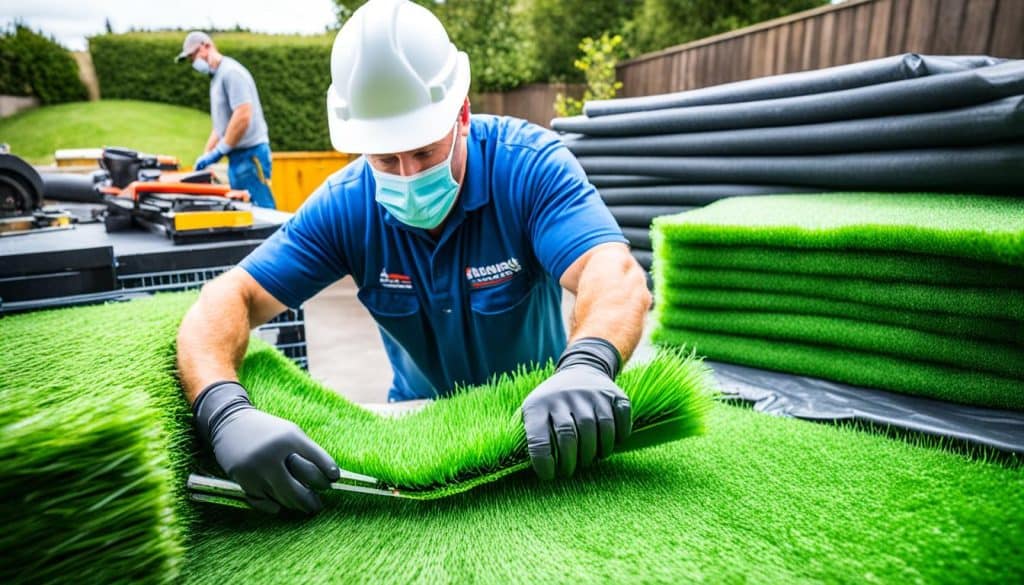
Cost Planning for Sub-Base and Drainage
When setting up artificial grass, it’s key to plan your budget for the sub-base and drainage. Knowing about different sub-base materials and their costs is important. This knowledge helps me pick the right materials within my budget without sacrificing quality.
Types of Sub-Base Materials and Their Costs
Sub-base materials are crucial for artificial grass to last long. Here are the main ones:
- Crushed granite: A great choice for durability. It costs between $30 and $50 per ton.
- Recycled aggregate: Eco-friendly and often cheaper, costing $25 to $40 per ton.
- Sand: Used with other materials, priced at $15 to $30 per ton.
I can choose the best sub-base option by comparing these. It meets my budget and ensures the turf’s support.
Techniques to Save on Drainage Solutions
Good drainage stops water buildup and keeps the turf looking nice. Here are ways to save money on it:
- Using perforated pipes: They improve water flow and cut down on costly installs.
- Opting for natural sloping: Designing the site to drain water naturally avoids expensive drainage systems.
- Incorporating gravel: Gravel layers improve drainage at a lower cost than full systems.
Choosing the right drainage methods helps control costs while making sure the turf stays durable.
Importance of Proper Base Preparation
Getting the base right is vital for the turf’s looks and lifespan. It involves:
- Checking soil conditions to see if soil boring tests are needed. These tests can cost $800 to $1400.
- Making sure the sub-base is well compacted. This prevents uneven surfaces later.
- Adding drainage channels during base setup to handle water well.
Focusing on proper base prep lays down a sturdy foundation. It keeps my turf functional and attractive for years.
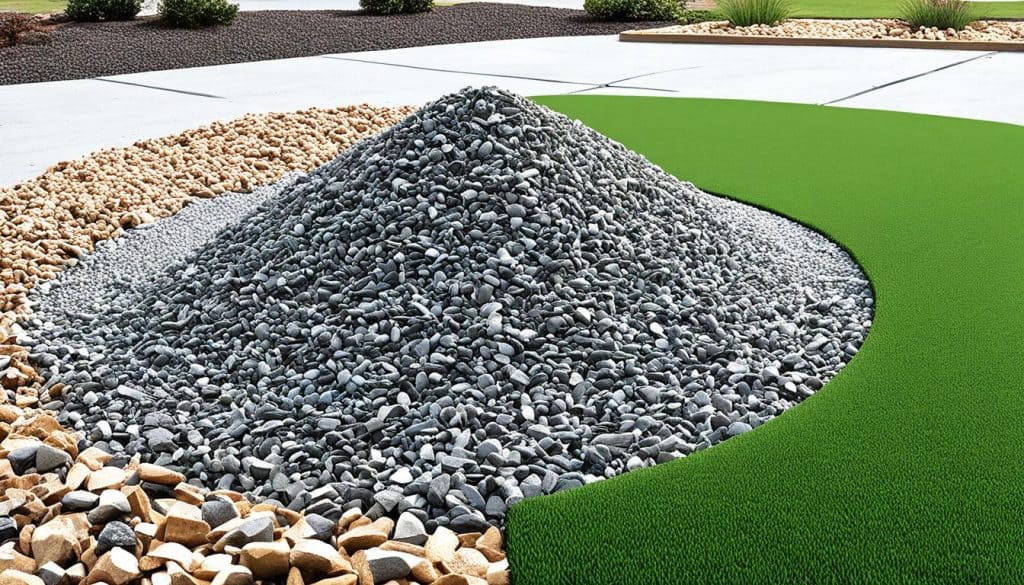
Securing Turf with Budget-Friendly Methods
Getting artificial grass in place without spending a lot is possible. For big areas with less foot traffic, using nails is great. This approach is budget-friendly because it skips the costly seaming tape. By nailing down the perimeter and certain spots, the turf stays put but can be adjusted easily later.
For the edges, you can use landscape staples or wooden stakes without spending much. These methods are cheap and keep things looking neat since they’re hidden under the turf. Making sure the edges are secure is key. It prevents the turf from moving or lifting later, which could ruin its look and use.
I’ve learned that mixing low-cost methods with good materials is smart. It cuts down immediate expenses and gives a long-lasting, nice-looking turf. By choosing these cheaper options, I get a high-end look for the artificial grass without the big costs usually involved.
